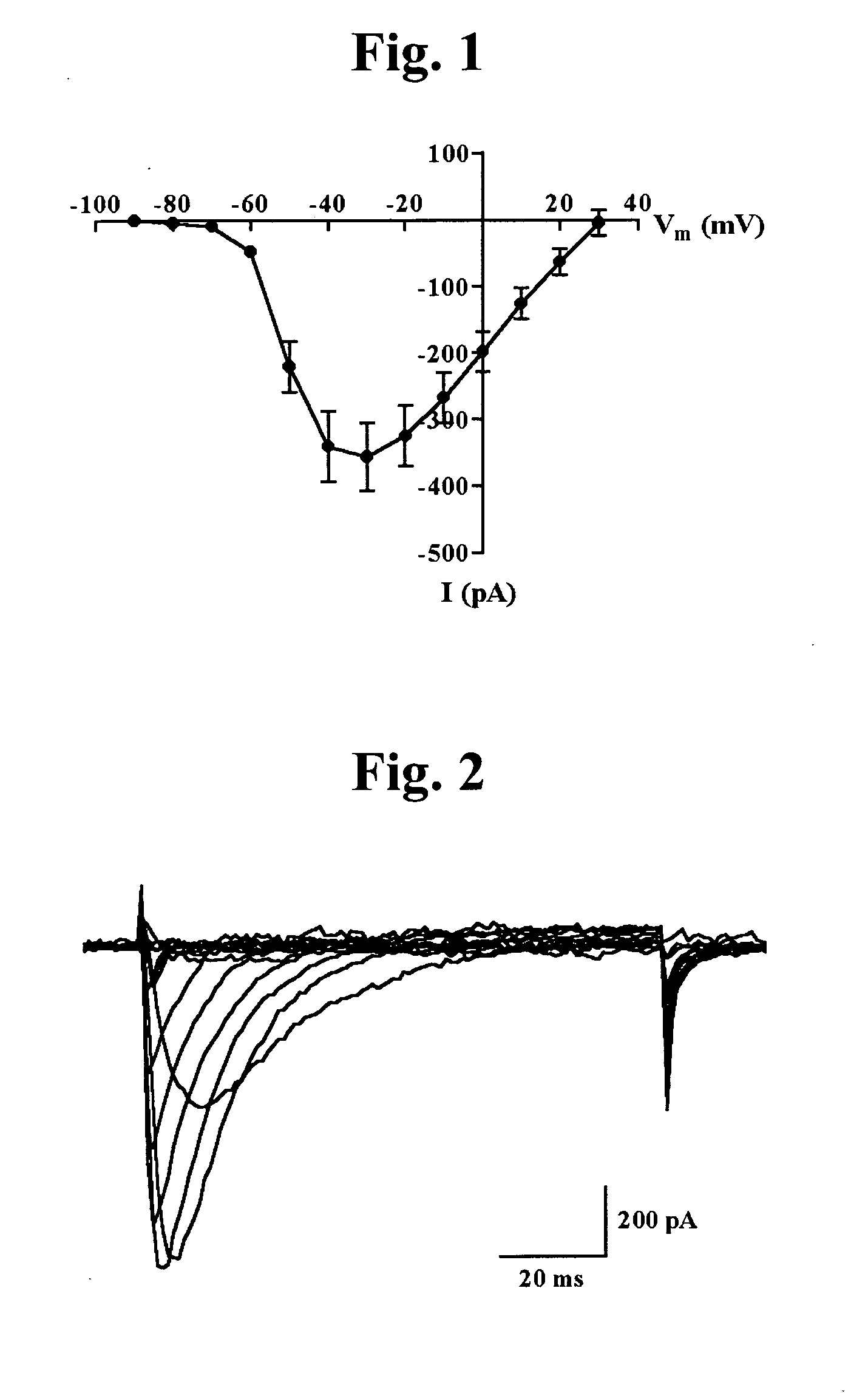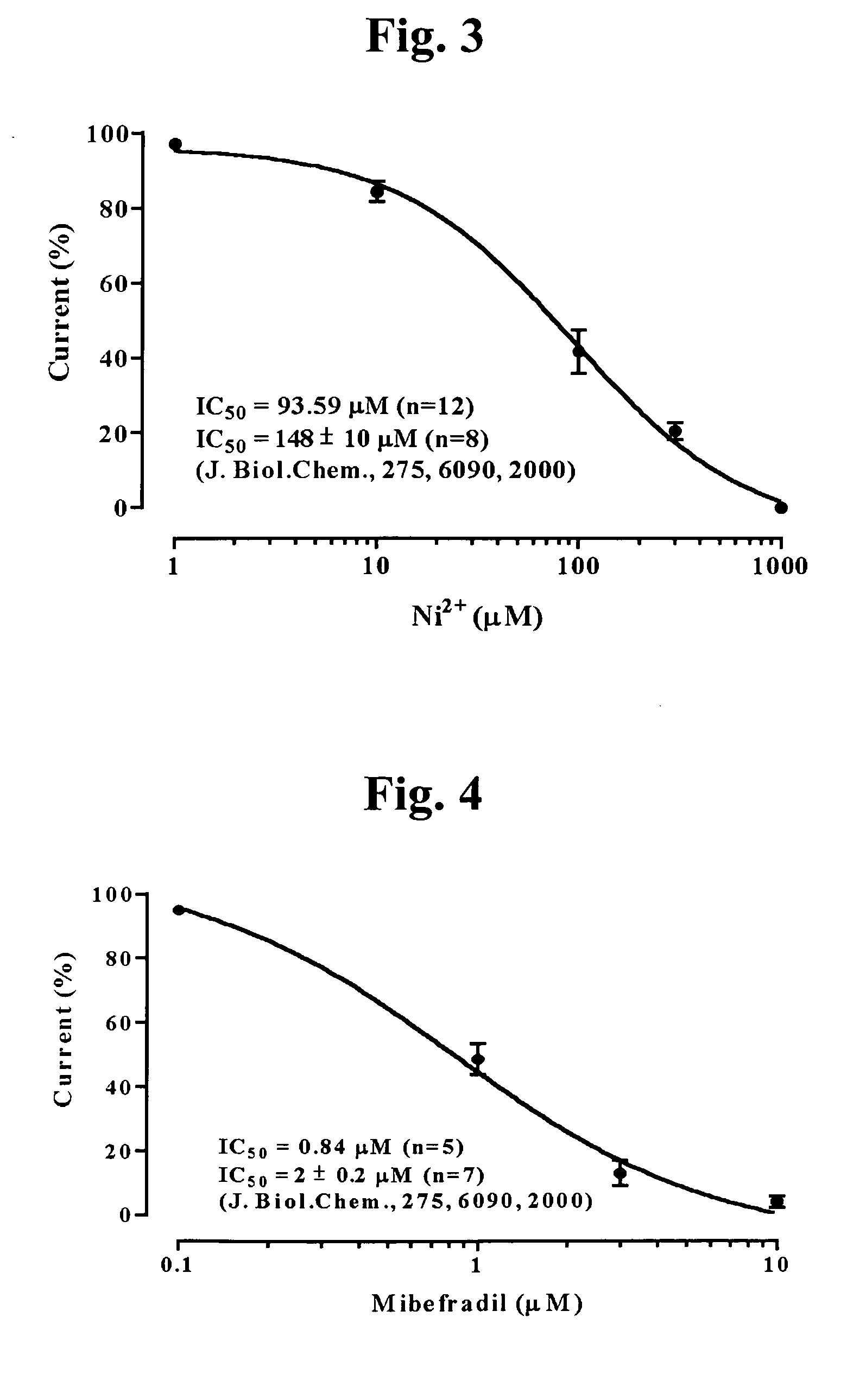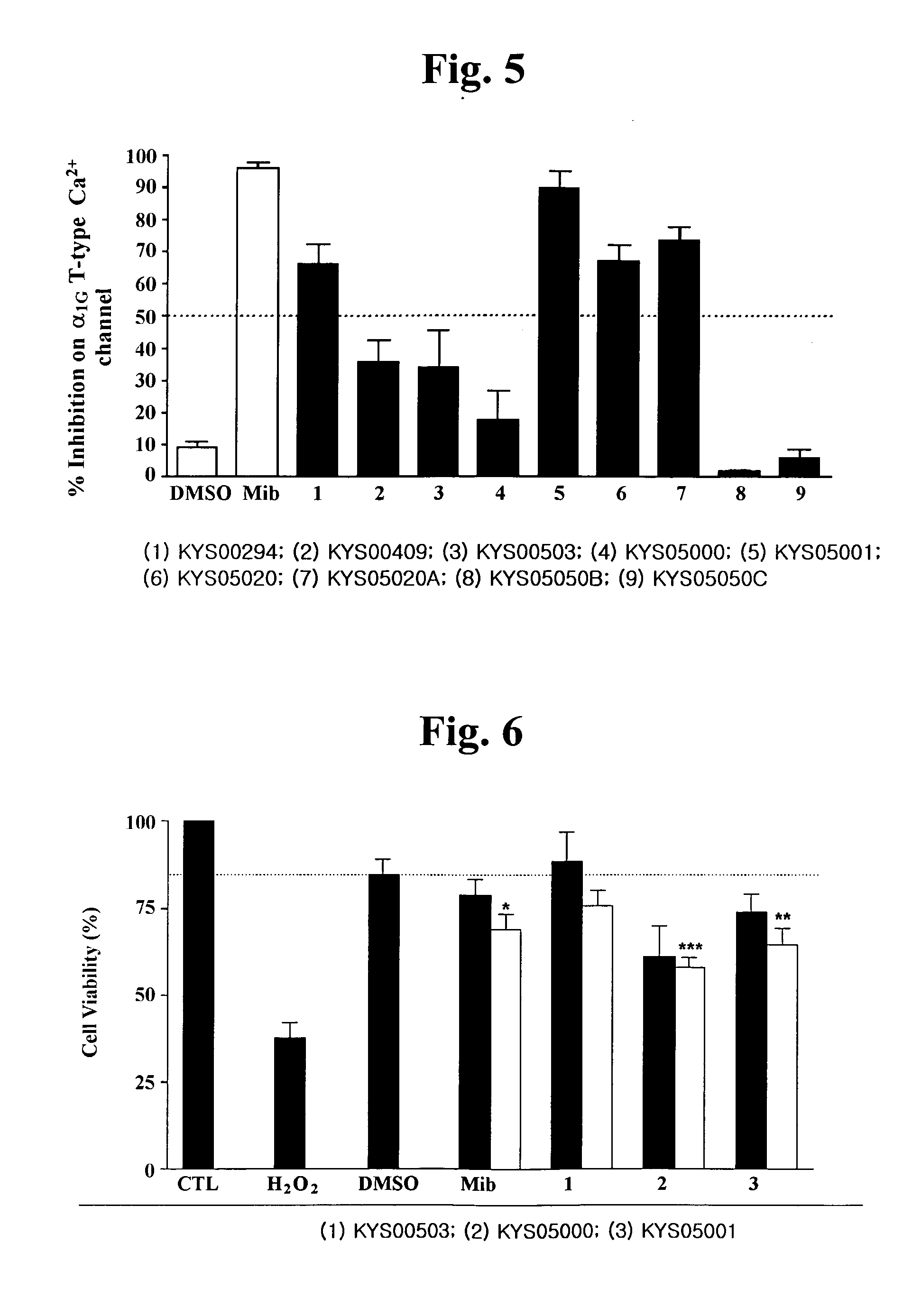3,4-Dihydroquinazoline derivatives as T-type calcium channel blockers and method of preparing the same
a technology of dihydroquinazoline and derivatives, which is applied in the direction of biocide, cardiovascular disorders, drug compositions, etc., can solve the problems of ineffective t-type calcium channel blockers, and achieve superior therapeutic effects
- Summary
- Abstract
- Description
- Claims
- Application Information
AI Technical Summary
Benefits of technology
Problems solved by technology
Method used
Image
Examples
example 1
Preparation of methyl 2-aminocinnamate (2)
[0035] Methyl 2-nitrocinnamate (1) (0.202 g, 0.975 mmol) was dissolved in 20 ml of ethyl acetate and SnCl2.2H2O (1.11 g, 4.87 mmol) was added thereto. The reaction mixture was heated at 70° C. for 1 hour. After the reaction was completed, the reaction mixture was cooled to a room temperature. The reaction mixture was adjusted to a weak alkaline solution with a saturated sodium bicarbonate solution and then filtered with fine clay layer (Celite 545). A water layer was extracted with ethyl acetate three times, in which an organic layer collected therefrom was dried with anhydrous magnesium sulfate. Thereafter, the solvent was removed under reduced pressure. The reaction mixture was subjected to column chromatography (hexane:ethyl acetate=5:1) to purify the title compound (2) in the form of a yellow crystal (0.161 g, 93%) (mp 67° C.).
[0036] IR (KBr) 3365, 2364, 1704, 1622, 1330, 1198, 756 cm−1; 1H NMR (300 MHz, CDCl3) 67 7.86 (d, J=15.9 Hz, 1...
example 2
Preparation of methyl 3-[2-(3-phenylureido)phenyl]acrylate (3)
[0037] Methyl 2-aminocinnamate (2) (6.35 g, 35.8 mmol) was dissolved in 150 ml of benzene and phenylisocyanate (5.12 g, 43.0 mmol) was slowly dropped thereto at a room temperature. The reaction mixture was stirred for 12 hours to obtain a solid precipitate. Then, the precipitate was washed with ether in order to obtain the title compound (3) in the form of a white crystal (10.2 g, 96%) (mp 184° C.).
[0038] IR (KBr) 3346, 3278, 1724, 1650, 1548, 1322, 1172, 758, 672 cm1; 1H NMR (300 MHz, DMSO) δ 8.94 (s, 1H, —NH—CO—) 8.49 (s, 1H, —NH—CO—) 7.89 (d, J=15.9 Hz, 1H, —CH═CH—CO2Me), 7.76 (d, J=7.8 Hz, 2H, aromatic), 7.46 (d, J=8.4 Hz, 2H, aromatic) 7.39 (t, J=8.1 Hz, 1H, aromatic), 7.28 (t, J=7.8 Hz, 2H, aromatic) 7.12 (t, J=7.5 Hz, 1H, aromatic) 6.97 (t, J=7.8 Hz, 1H, aromatic), 6.58 (d, J=15.3 Hz, 1H, —CH═CH—CO2Me), 3.73 (s, 3H, —OCH3); 13C NMR (75 MHz, DMSO) δ 167.4, 153.5, 140.5, 140.3, 138.5, 131.4, 129.5, 127.8, 126.8, 12...
example 3
Preparation of methyl 3-[2-(phenyliminomethyleneamino)phenyl]acrylate (4)
[0039] The compound (3) (6.04 g, 20.4 mmol) and triethylamine (6.19 g, 61.2 mmol) were dissolved in 30 ml of dichloromethane and dibromotriphenyl-phosphine (12.9 g, 30.6 mmol) was gently added thereto at 0 ° C. The reaction mixture was stirred for 1 hour and extracted with dichloromethane three times. An organic layer collected therefrom was dried with anhydrous sodium sulfate and the solvent was removed under reduced pressure. The reaction mixture was subjected to column chromatography (hexane:ethyl acetate=20:1) to purify the title compound (4) in the form of a white crystal, carbodjimide (4), (4.26 g, 75%) (mp 54° C.).
[0040] IR (KBr) 2142, 1716, 1484, 1172, 756, 59 cm−1; 1H NMR (300 MHz, CDCl3) δ 8.18 (d, J=16.2 Hz, 1H, —CH═CH—CO2Me), 7.56 (d, J=7.8 Hz, 1H, aromatic), 7.36-7.29 (m, 3H, aromatic), 7.25 (d, J=7.8 Hz, 1H, aromatic), 7.20-7.13 (m, 4H, aromatic), 6.52 (d, J=16.2 Hz, 1H, —CH═CH—CO2Me), 3.80 (s, ...
PUM
| Property | Measurement | Unit |
|---|---|---|
| Length | aaaaa | aaaaa |
Abstract
Description
Claims
Application Information
 Login to View More
Login to View More - R&D
- Intellectual Property
- Life Sciences
- Materials
- Tech Scout
- Unparalleled Data Quality
- Higher Quality Content
- 60% Fewer Hallucinations
Browse by: Latest US Patents, China's latest patents, Technical Efficacy Thesaurus, Application Domain, Technology Topic, Popular Technical Reports.
© 2025 PatSnap. All rights reserved.Legal|Privacy policy|Modern Slavery Act Transparency Statement|Sitemap|About US| Contact US: help@patsnap.com



